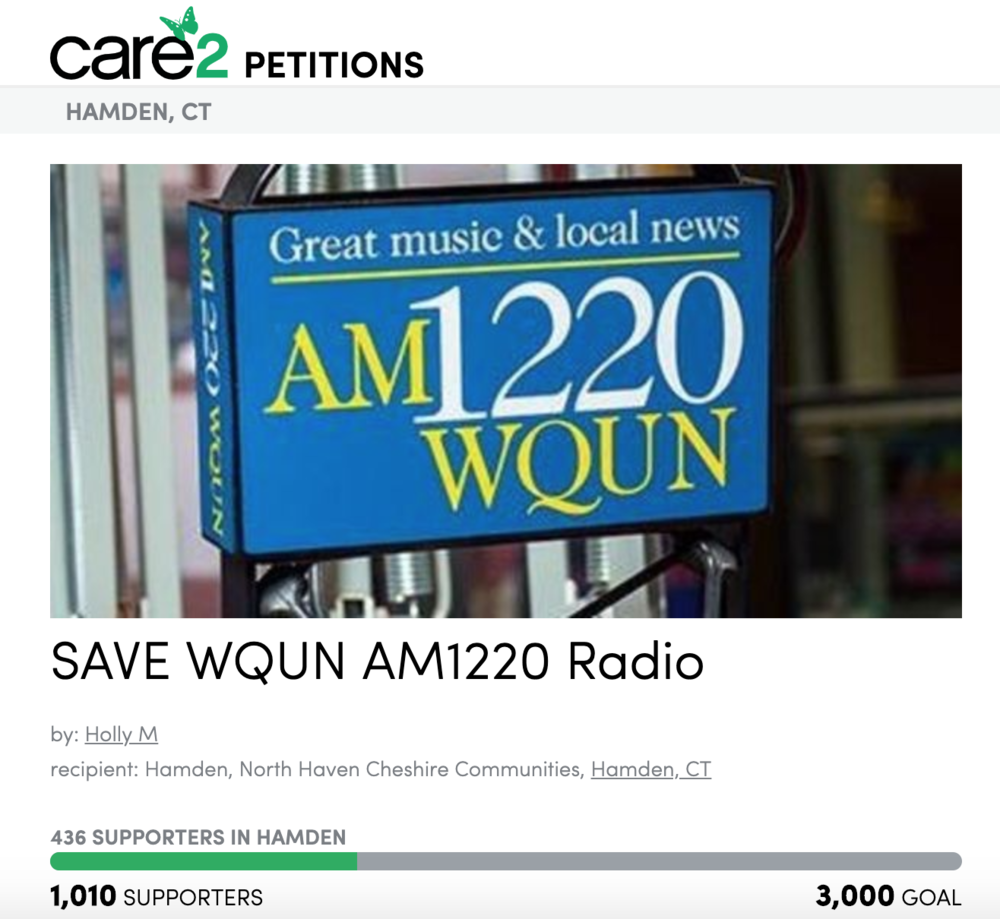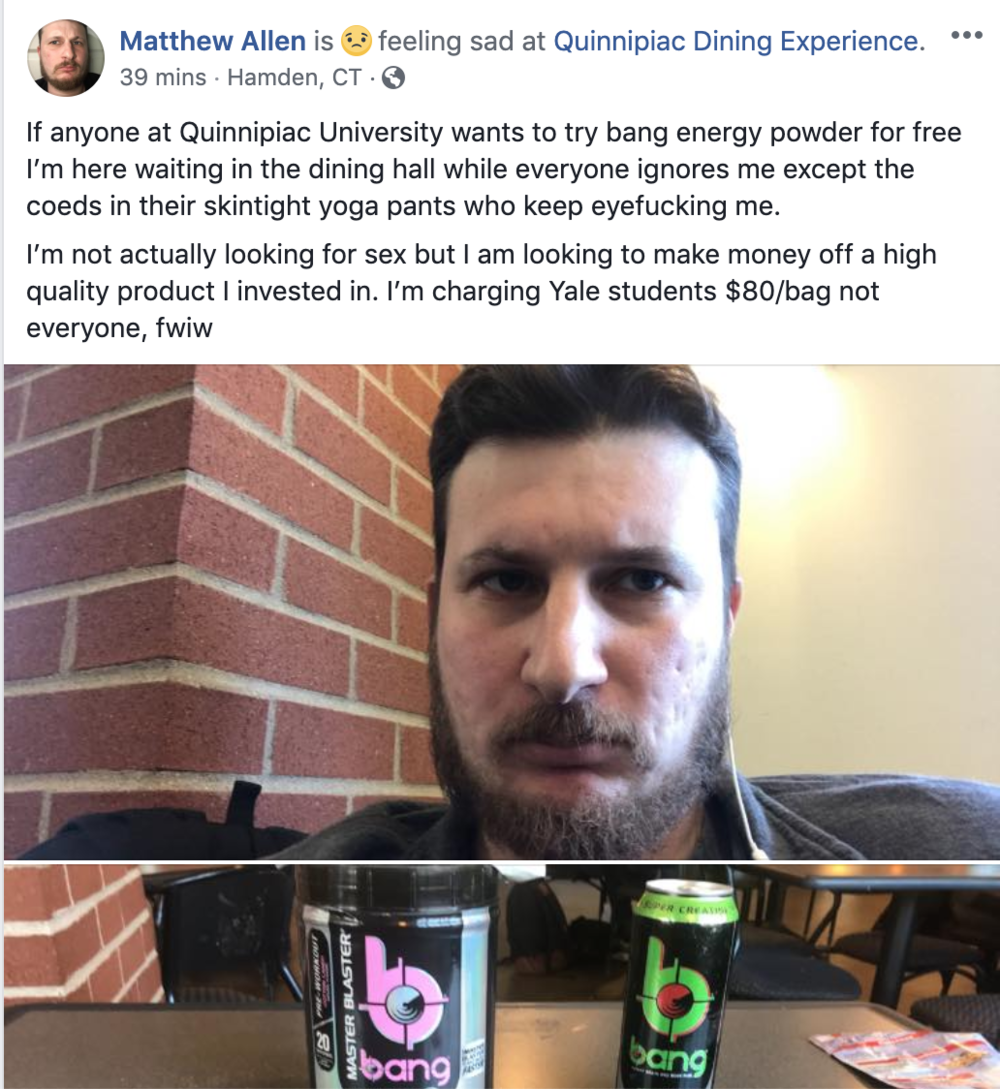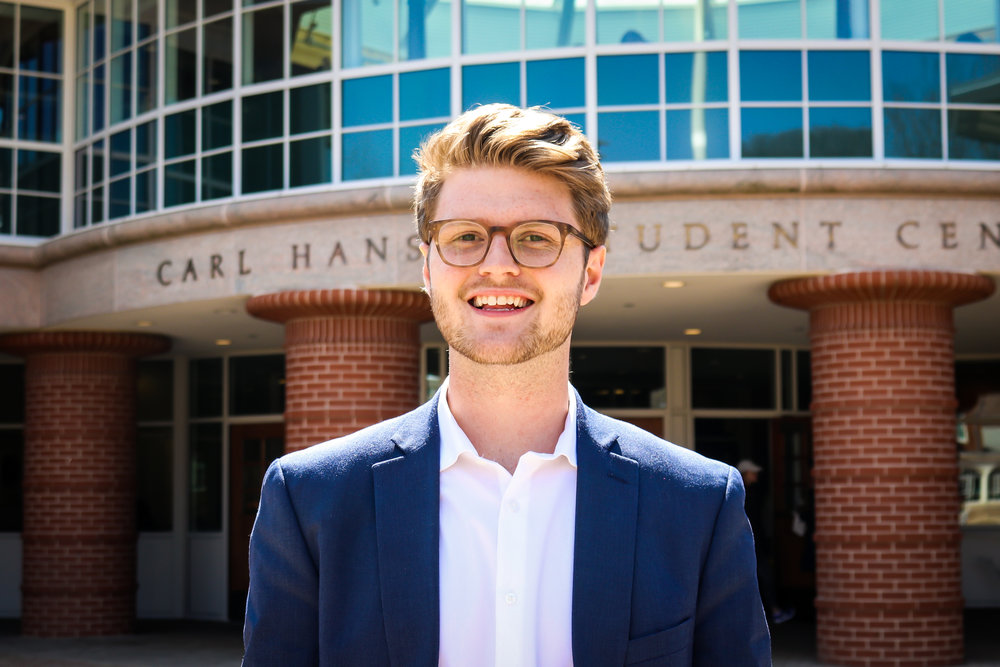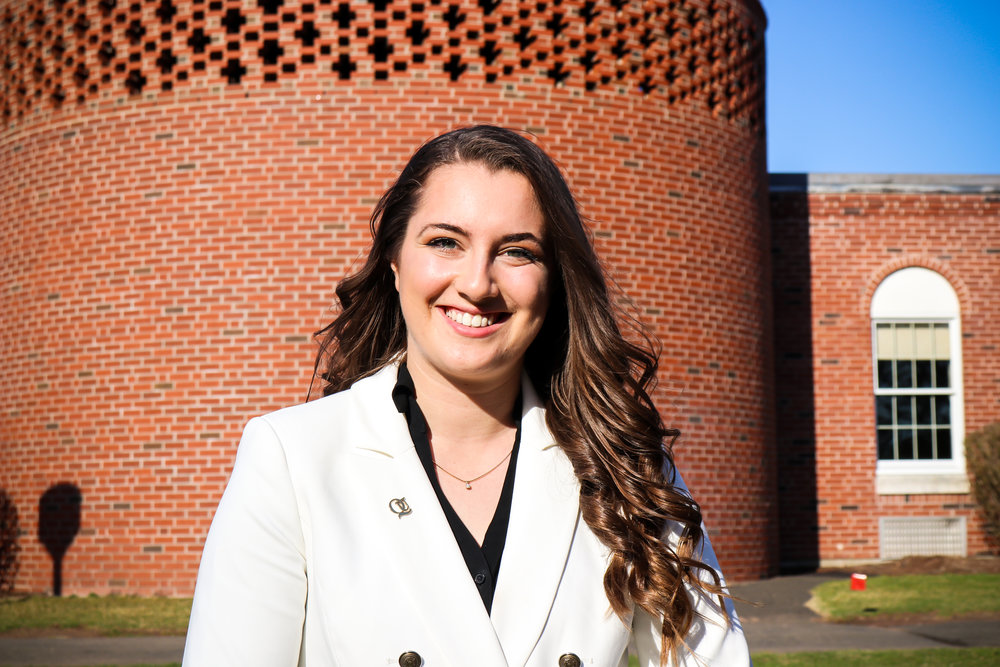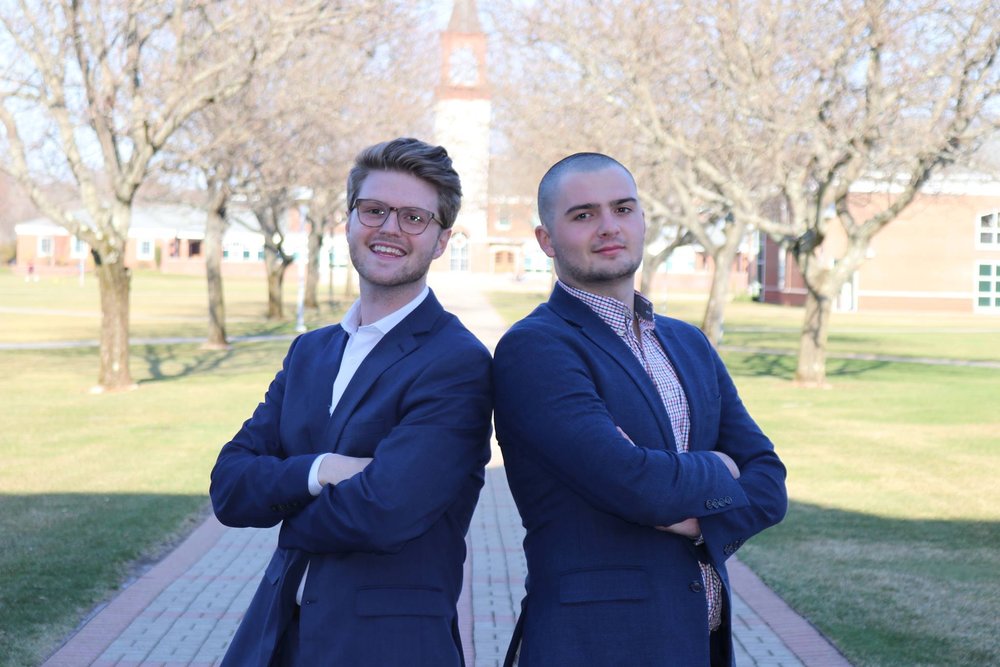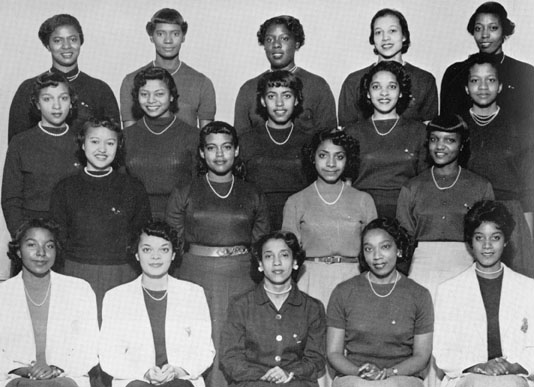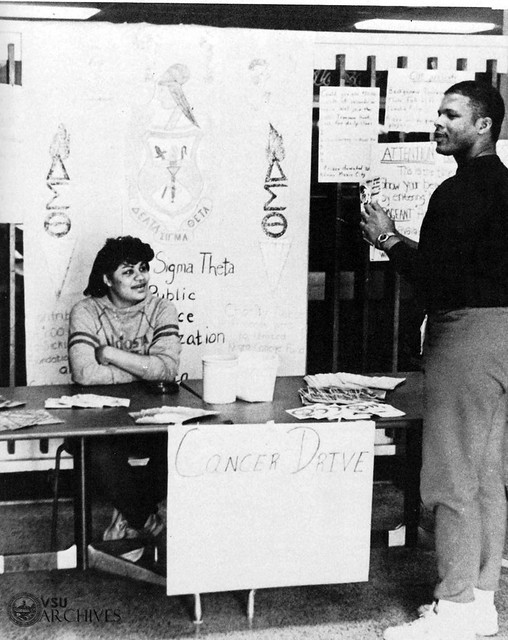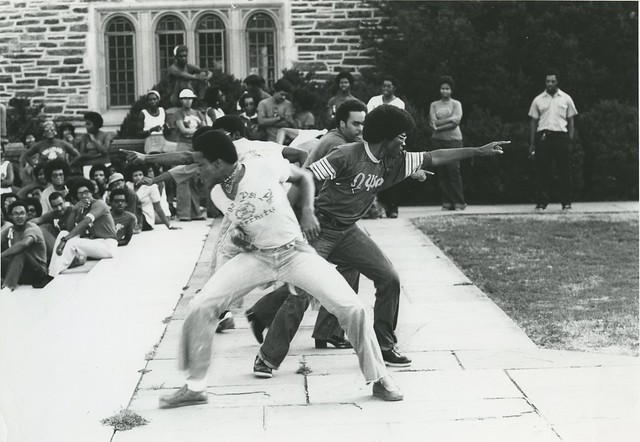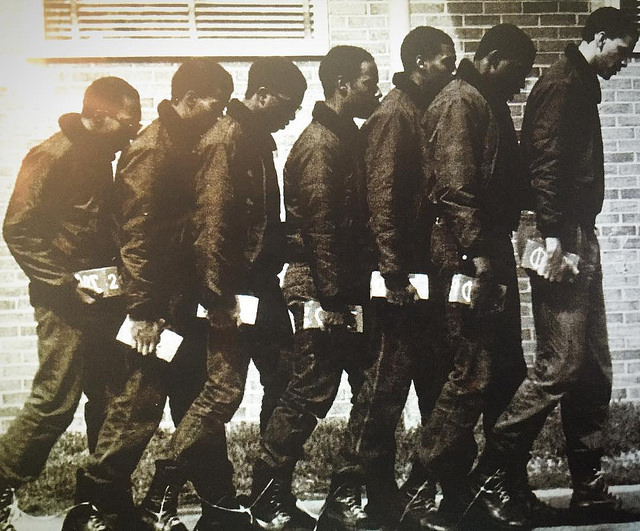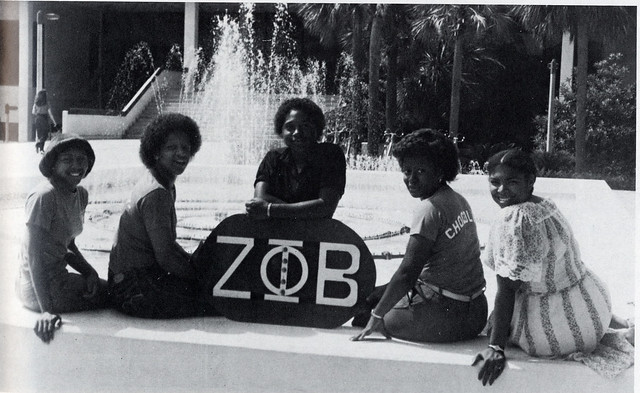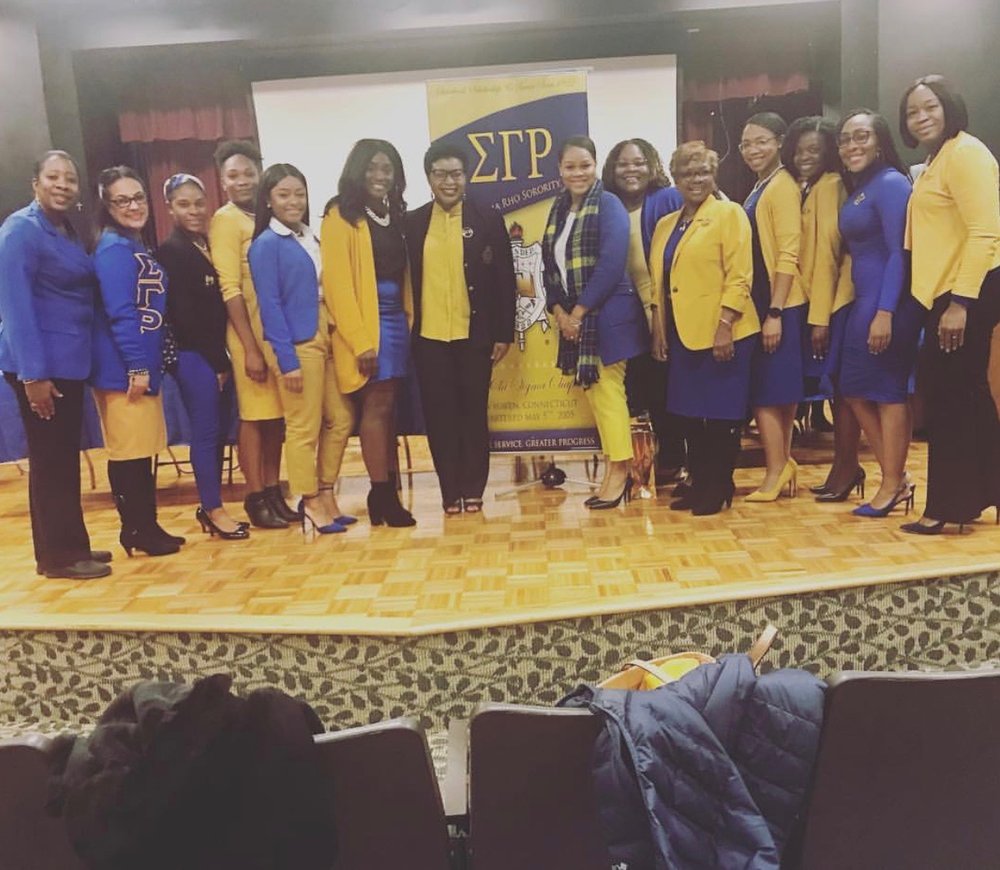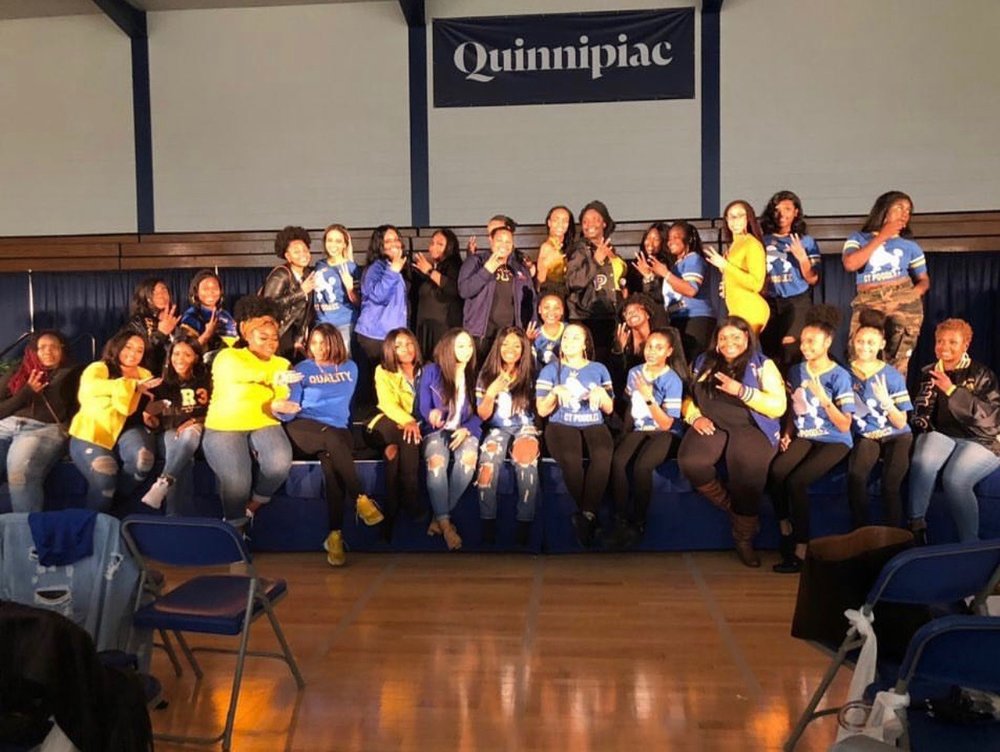By Emma Spagnuolo

Outside the WQUN studios in Hamden, Connecticut.
Abandoned cars. Streets closed. Locals forced to walk back to their homes. Holly Masi reflects on the one-year anniversary of the unexpected and destructive tornado that ripped through her hometown of Hamden, Connecticut last May. Masi was fortunate enough to not lose power, but many of her friends that live in northern Hamden did not have that same fortune. Luckily for Masi and other Hamden residents, there is always one reliable outlet for local news and information, even in times of emergency, Quinnipiac University’s commercial AM radio station, WQUN.
“You’re not going to get the same up-to-date coverage on a statewide level, “ said Masi, “The fact that I had local radio to tune into – that was critical to me.”
Masi is unsure, however, of where she’ll turn for guidance when the next major storm or outage hits, as nearly three months ago, Quinnipiac University officials announced that WQUN would be shutting down this summer.
In a statement emailed to the university community, Lynn Bushnell, Vice President for Public Affairs, wrote, “This difficult decision was made after careful consideration of our first priority, the needs of our students. The number of students who even consider a career in radio, or want to intern at WQUN-AM has declined sharply, prompting the university to re-examine the prudence of contributing to operate a community radio station.”
The decision to close WQUN sparked anger in the community, which is why Masi, a lifelong Hamden resident and the town’s Zoning Enforcement Officer, decided to create a petition in an attempt to save the station. Since it was created in February, Masi’s petition has racked up over 1,000 supporters.
“When I heard that it was closing, something sunk in me,” said Masi, “It just seemed like one of those decisions that was like, there’s just no way to wrap your head around it. I’ve not run into one person that hasn’t had the same reaction, so I just was sitting at home and I started the petition.”
Her petition pulled support from all facets of the community, from Hamden residents, to Quinnipiac students and even town officials, including Mayor Curt Leng. Mayor Leng even left a comment on the petition in support of the station writing, “This is an incredible community resource, the Public Safety centerpiece, I’m hopeful that the university rethink this shortsighted decision.”

WQUN’s mission statement, which was introduced in 1997 when the station first took to the airwaves.
Though Bushnell cited that the decision to shut down the station was influenced by the changing needs of students, the initial reason why WQUN was established, however, was not for students at all. In fact, according to the station’s original mission statement, it serves to connect Quinnipiac to the Hamden/ New Haven community.
On top of the original mission statement, a 1997 New York Times article further reported that WQUN was designed to connect the university to the community. It stated, “students at Quinnipiac are not the station’s primary audience; rather, the entire New Haven area is, encompassing 15 towns.” In the article, Michael Collins, former WQUN station manager, indicated that the station’s focus would be on “community activities – on positive things.”
According to Quinnipiac’s official website, WQUN has now been serving the local New Haven area for over 20 years. The station also “entertains audiences with a variety of music from the ‘60s through the ‘80s, as well as Bobcats sports, local traffic and weather, and award-winning local news.”
WQUN currently features radio shows like The Morning Show with Ray Andrewsen and Lunch with Landry, which highlight community leaders and elected officials, showcase local small businesses and community events and even broadcast information related to Quinnipiac. Not to mention, the station serves as a source for Quinnipiac athletic broadcasts.
“I am a huge local radio supporter because I know the value that’s in it,” said Masi, “I know the community it cultivates. It helps bridge the gap between the university and the community. It’s a place where everyone can go to get their information.”
Masi’s petition already collected 800 signatures just a few weeks after taking off, which made the decision to shut down WQUN one of the hottest topics around campus moving into President Judy Olian’s “State of the QUnion” address in February.
Quinnipiac administration continued to take heat for the decision at the event, however President Olian stepped up to defend the decision when she said, “AM radio is no longer a very well-listened to outlet. In fact, audience has gone down dramatically for AM.”
Though President Olian argued that AM listenership is down, industry research indicates otherwise. According to Nielsen’s second-quarter 2017 Comparable Metrics Report, Americans tune into AM/FM radio each week more than any other media platform. In fact, 93 percent of Americans over the age of 18 listen to radio every week. Comparatively, 88 percent of Americans watch TV, 83 percent utilize smartphones and only 50 percent use personal computers weekly. Radio is without a doubt America’s top reach medium.

Perhaps one reason for why radio is America’s most popular medium, as the Hamden community proved in its outcry about WQUN, is because of radio’s ability to engage with local audiences. More than eight in ten respondents to a recent Jacobs Media poll indicate that they agree or strongly agree with the statement “one of radio’s primary advantages is its local feel.”

Masi, of course, is one person who values radio’s local feel. “I’m all about being a local person. I only buy coffee local. I don’t really like to go to the chains, so I’m the same way with radio. I might dabble in listening to other stuff, but I always stay true to my hometown people.”
Even industry experts believe in local radio. Steve Chessare is the General Manager of two Cumulus stations in Connecticut, both WICC and WEBE. Prior to working for Cumulus, Chessare spent years working in management roles for several other radio conglomerates, from Greater Media to Clear Channel Communications (presently known as iHeartMedia.) After 34 years of working in the industry, he is still an advocate for listening local.

Steve Chessare, General Manager of WICC and WEBE. Photo courtesy of Radio Ink, the industry’s premiere management and marketing magazine.
“People want to know what’s going on in their communities,” said Chessare, “They want to know what is news that impacts their daily lives. Whenever there’s a natural disaster or a major event, the majority of people turn to the radio to find out what’s going on.”
Community radio stations have the ability to deliver hyperlocal information to listeners that they cannot get from regional or national stations. Stations that broadcast voice-tracked programming that is syndicated across the nation especially fail to localize news for listeners. According to Chessare, local radio is going through a renaissance.
“Right now, local radio is hot and a lot of broadcasters that have turned their backs on the local initiative are now coming back to realize how valuable it is and how profitable it is,” said Chessare, “I think you’re going to see more broadcasters focusing on local radio – live and local, instead of just these big national platforms.”
Although Bushnell indicated in her statement that students are moving away from careers in radio, many Quinnipiac students, including over one hundred members of Quinnipiac’s student-run radio station, WQAQ, and four current student interns at WQUN this semester, feel otherwise.
Marc Regis, one current WQUN intern and WQAQ member, feels that Quinnipiac administrators turned their backs on many students interested in broadcasting when they released the initial statement announcing WQUN would shut down.
“Personally, I feel that radio is incredibly popular at Quinnipiac,” said Regis, “During my four years here, the number of radio shows has grown exponentially. It angers me that Quinnipiac students will no longer be able to use the skills they learned at WQAQ in a low-stakes, professional environment.”

Quinnipiac’s School of Communications does not currently offer a radio broadcasting or concentrated audio journalism-related degree, so students interested in these avenues must pursue them outside of the classroom, through WQAQ or outside jobs and internships.
Another WQUN intern, senior Alessandro Woodbridge from Brighton, England, loves the industry so much that he was willing to work for the station unpaid, after he missed the traditional deadline to apply for a paid semester-long internship.
Woodbridge said that the “community feel” is the reason why he loves radio so much, as he noted he is particularly inspired by Lunch with Landry, a daily midday program hosted by WQUN’s Operations Manager, Pam Landry. The show often spotlights local businesses, politicians or other prominent members of the Hamden community.
“It felt like she was actually helping people and that was kind of a really nice thing about it,” Woodbridge said, “I’m all for helping people. I think it’s a really beautiful thing, it makes you think you’re trying to give back. That’s why I like Lunch with Landry.”
Woodbridge felt so inspired by Landry’s show that he actually plans to work in radio himself following graduation. He hopes to someday host a program similar to Lunch with Landry and be the voice of a community.
“WQUN was literally the perfect opportunity for me to have that radio experience that’s local,” said Woodbridge, “Getting that exposure to that radio environment, knowing how it works, it was so valuable.”
Many former WQUN interns have gone on to have successful broadcasting careers, as Woodbridge hopes to. Kevin Rincon is one former intern who can attest to how the station prepared him for a career in radio, despite the university’s suggestion that students have turned away from these careers. Rincon interned for WQUN through 2010 and currently works for WCBS, an Entercom station in New York City, as an anchor and reporter.
“I had the growing pains at WQUN as an intern there and that really prepared me to hit the ground running when I came out,” said Rincon, “It taught me the persistence, it taught me good work ethic, it taught me to be held accountable. It really gave me the opportunity to be in a professional capacity without being a professional just yet.”

Kevin Rincon, former intern at WQUN and current Anchor/ Reporter for WCBS. Photo courtesy of LinkedIn.
Rincon explained that WQUN prepared him for a range of opportunities in the industry, as he has both worked for traditional terrestrial radio stations, as well as radio startups.
“That’s really a testament to WQUN where I was both prepared to walk into a heritage station, where people have been doing the same thing for decades, and I was also able to help out at places that literally were just trying to find ideas on how to build something from the ground up.”
He, too, is saddened by the university’s decision to close the station.
“I think it’s disappointing because I think it’s shortsighted,” said Rincon. He went on to say, “It’s disappointing because I think there’s more avenues for growth in that field than there is in some other mediums that Quinnipiac is investing in. That’s my take – they obviously didn’t share in that.”
Not to mention, he feels that WQUN’s connection to the community is extremely valuable. As a radio journalist and news junkie, Rincon feels the most valuable aspect of local radio is to be able to hear from local leaders.
“In radio, we have the opportunity to hear someone, to go through what they believe, what they think about certain issues that impact the community,” said Rincon, “It’s a great tool to hear from your elected officials, to hear from your community leaders, to hear from people who make an impact on your community and hold them to account.”
Rincon hopes that Quinnipiac will revisit and reverse their decision, however as the clock ticks down on WQUN’s final broadcast on May 31, it seems unlikely that they will. It should not go unnoticed that Quinnipiac Board of Trustee members have thoroughly supported the decision to shut the station down. The Chairman of Quinnipiac’s Board of Trustees, William Weldon, told the New Haven Register back in March that “to continue to invest in areas that are part of the past is probably not the best use of the resources.”
Though President Olian’s reasoning for shutting down the station appears to be contradicted by recent studies, she has made it clear that the university is unwilling to reconsider. President Olian has since expressed that she intends to utilize the building housing WQUN as a podcast center for next year, however no further information regarding that has been announced yet.
This still leaves Masi and many other community members who have supported her petition unsatisfied.
“What keeps fueling the fire is the fact that we don’t have an answer from the university that actually makes sense – that’s truthful, that supports what we know to be the truth.”
